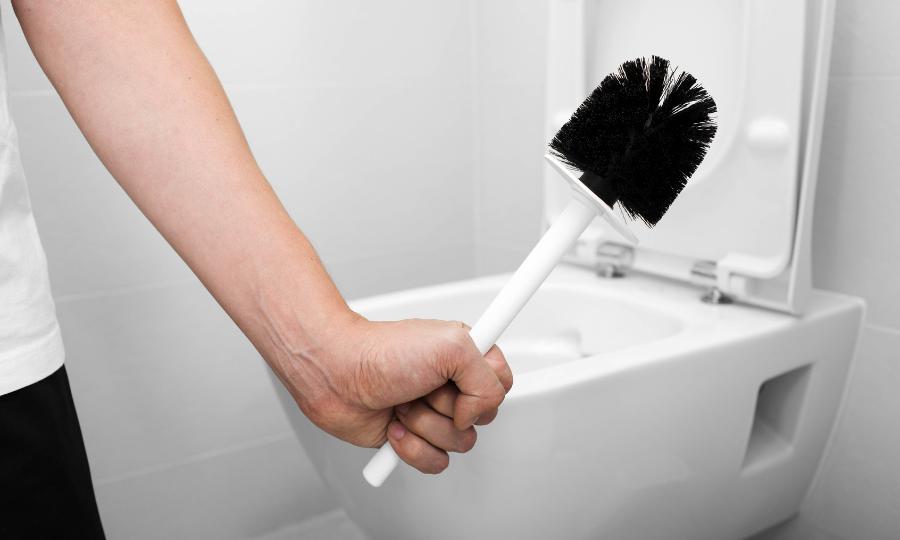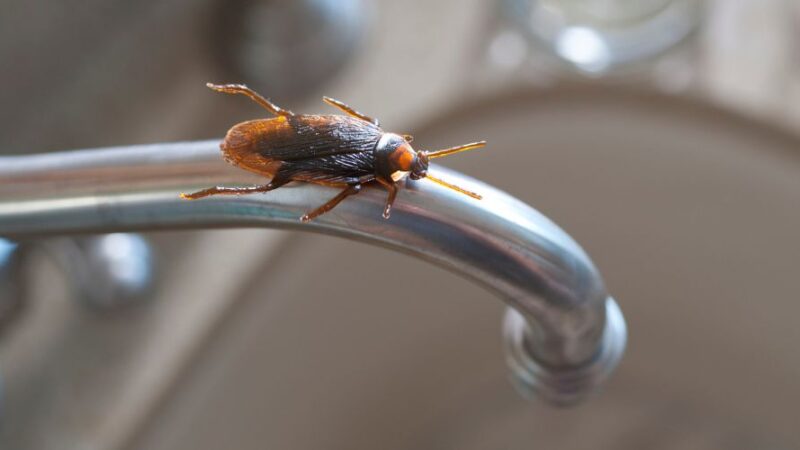How to Clean Toilet Brushes (Yes, You Should!)

When was the last time you cleaned your toilet brush? If you’re like most people, the answer is probably “never” or “I can’t remember.”
After all, it seems strange to clean the very tool you use to clean something else. But here’s the uncomfortable truth: your toilet brush is one of the dirtiest items in your entire bathroom.
Every time you use it, the brush collects bacteria, stains, and grime from the toilet bowl. If you don’t clean it regularly, those germs don’t just stay there-they multiply, create odors, and spread the next time you scrub your toilet.
👉 Did You Know? Scientists have found that a single flush can spray microscopic particles up to six feet from the toilet-and your brush and holder usually sit right in the line of fire.
That means every time you flush, your brush is exposed to even more germs-even if you didn’t use it!
In this guide, we’ll cover everything you need to know about why cleaning your toilet brush is essential, how often to do it, and the best step-by-step methods to keep it fresh and hygienic.
Why You Should Clean Your Toilet Brush
Let’s be honest: most people don’t think twice about their toilet brush. You use it, you put it back in the holder, and you move on. The problem is that toilet brushes are perfect breeding grounds for bacteria and mold.
When a brush is left wet, sitting in dirty water inside its holder, it creates the perfect warm, damp environment where germs thrive.
Here’s what happens when you skip cleaning your toilet brush:
- Harmful bacteria like E. coli and salmonella multiply on the bristles.
- The brush holder collects stagnant water filled with germs.
- Odors begin to seep into your bathroom.
- Each new cleaning session spreads old bacteria back into your freshly scrubbed toilet.
👉 Did You Know? E. coli, one of the most common bathroom bacteria, can survive on surfaces like toilet brushes for up to 24 hours or more.
So yes-cleaning your toilet brush is absolutely necessary if you want your bathroom to truly be clean.
How Often Should You Clean Your Toilet Brush?
This depends on how often you use it, but here are some guidelines:
- Quick Rinse: Every time you use it.
- Deep Clean: Once a week.
- Replacement: Every 6–12 months (or sooner if it looks worn or smells bad).
👉 Pro Tip: If you live in a busy household where the bathroom is used often, consider replacing your brush more frequently. It’s a small cost for a big boost in hygiene.
What You’ll Need to Clean a Toilet Brush
Before you start, gather a few basic cleaning supplies:
- Rubber gloves (to protect your hands)
- Hot water
- Disinfectant (bleach, hydrogen peroxide, or vinegar)
- A bucket or the toilet bowl itself
- Old towel or rag (for drying)
Optional:
- Dish soap (for extra grease-cutting power)
- Disinfectant tablets (to keep the holder fresh longer)
Step-by-Step: How to Clean a Toilet Brush
1. Rinse Immediately After Use
When you’re done scrubbing the toilet, don’t just put the brush back. Hold it under the flush water to rinse off debris. This quick step reduces buildup and makes deep cleaning easier later.
2. Disinfect the Brush Thoroughly
There are two main methods:
Option A: Using Bleach (Strong Disinfectant)
- Fill a bucket with hot water.
- Add ½ cup of bleach.
- Place the brush in the solution and let it soak for 30–60 minutes.
Option B: Using Vinegar or Hydrogen Peroxide (Eco-Friendly Alternative)
- Mix equal parts hot water and vinegar (or hydrogen peroxide).
- Add a few drops of dish soap.
- Soak the brush for about 1 hour.
👉 Did You Know? Vinegar has been shown to kill 99% of bacteria and 82% of mold-making it an effective natural disinfectant.
3. Don’t Forget the Holder
Your toilet brush holder is often worse than the brush itself. All that dirty rinse water collects at the bottom and turns into a germ soup.
- Pour out any liquid.
- Scrub with hot, soapy water.
- Disinfect with the same solution you used for the brush.
4. Dry Thoroughly
One of the biggest mistakes people make is putting the brush back while it’s still wet. Moisture breeds bacteria.
- Balance the brush across the toilet bowl (with the seat holding the handle in place) and let it drip-dry.
- Leave it to air dry fully before returning it to the holder.
👉 Did You Know? Bacteria multiply every 20 minutes in damp environments. That means one wet brush can become a breeding ground for thousands of germs overnight.
5. Replace When Needed
Even with regular cleaning, brushes don’t last forever. If the bristles are bent, discolored, or permanently smelly-it’s time for a new one.
Consider upgrading to:
- Silicone toilet brushes (they resist buildup and dry faster).
- Disposable head systems (replaceable pads mean no long-term germ storage).
- Ventilated holders (airflow helps brushes dry quicker, reducing bacteria growth).
Extra Tips for a Fresher Toilet Brush
- Add a disinfectant tablet or splash of vinegar to the holder to keep it fresh.
- Store the brush in a ventilated holder, not a sealed container.
- Use gloves when handling to avoid contact with germs.
- For ultimate convenience, consider self-cleaning brush systems that sanitize automatically.
FAQs About Toilet Brush Cleaning
1. Can I put my toilet brush in the dishwasher?
No! Dishwashers are designed for kitchen items, and putting a toilet brush inside risks spreading harmful bacteria where your dishes go.
2. What’s the safest eco-friendly way to clean it?
A vinegar-and-hot-water soak works great. Add a few drops of dish soap for extra cleaning power.
3. How do I stop my brush holder from smelling?
Make sure the brush dries fully before putting it back. Adding a disinfectant tablet or a splash of bleach to the holder also helps.
4. How often should I replace a toilet brush?
Every 6–12 months, depending on how often it’s used and how well it’s maintained.
Final Thoughts
It may not be glamorous, but your toilet brush plays a bigger role in your bathroom’s cleanliness than you realize. By rinsing after every use, disinfecting weekly, and letting it dry thoroughly, you’ll stop bacteria in their tracks and keep your bathroom smelling fresher.
So the next time you finish scrubbing your toilet, remember:
👉 A clean brush = a truly clean toilet.
And yes-you absolutely should clean it! 🚽✨


